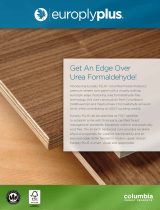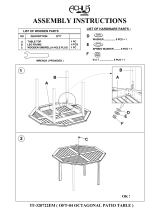
Composite wood products contain
urea formaldehyde, which is a known
carcinogen. UF is also designated as a
toxic air contaminant (TAC) in California
with no safe level of exposure, and state
law requires ARB to take action to reduce
human exposure to TACs.
California Air Resources Board ( CARB )
Fact sheet on Proposed Airborne Toxic Control Measure
for Composite Wood Products, July 2006.
Urea Formaldehyde Emission Line
Comparison in parts per million
Composite core hardwood plywood tested contained
urea formaldehyde resins but were laminated with
Columbia’s formaldehyde-free PureBond technology.
Very Few Bonds
are as Pure.
What PureBond means for the world.
Improving indoor air quality benefits us all. And eliminating urea
formaldehyde from composite wood products is a sure way to enhance
the quality of our indoor environments.
When Columbia Forest Products says PureBond is urea formaldehyde-free,
it means urea formaldehyde-free.Though formaldehyde does occur naturally
in wood, there is absolutely no added urea formaldehyde in the construction
of PureBond hardwood plywood.
It’s simple: When you use products made with formaldehyde-free PureBond
technology, you’re helping to reduce toxins within the indoor environment,
compared to traditional hardwood plywood products.
Columbia is well ahead of regulations by converting its manufacturing
processes to PureBond. It’s a win for workers, their communities,
customers and the environment.
PureBond panels are compliant
with the US Green Building
Council’s Leadership in Energy &
Environmental Design (LEED®)
EQ Credit 4.4 for Low-Emitting
Materials: Composite Wood.
PureBond hardwood plywood
panels can be specified as
FSC-certified. Columbia Forest
Products was one of the first
North American members of the
Forest Stewardship Council. By
buying products with an FSC
label you support the growth of
responsible forest management
worldwide. FSC Trademark ©1996
Forest Stewardship Council A.C.
sw-coc-065














